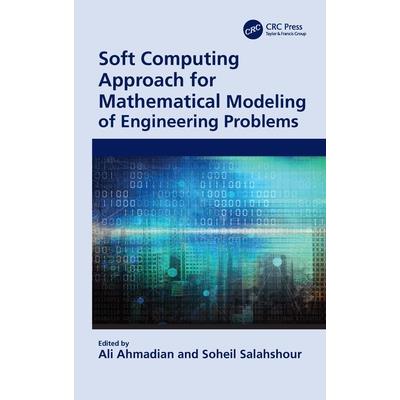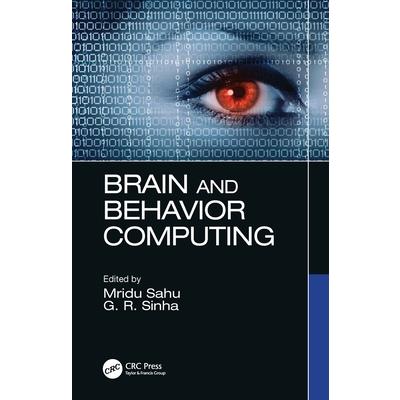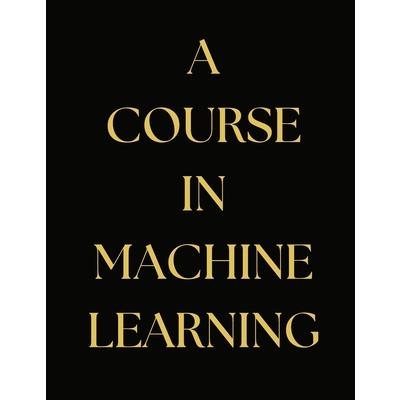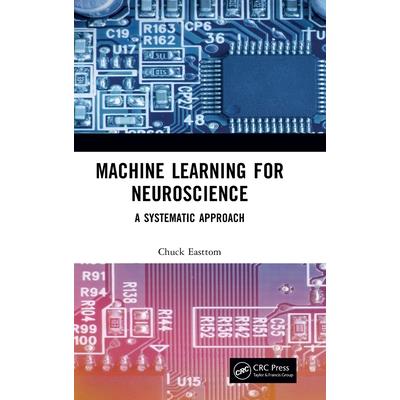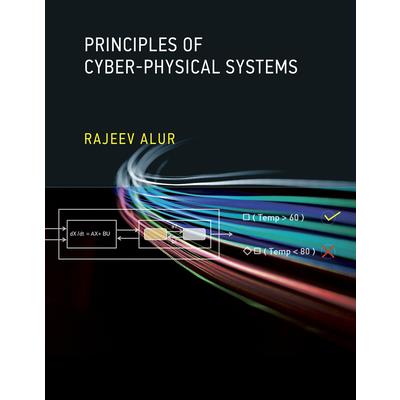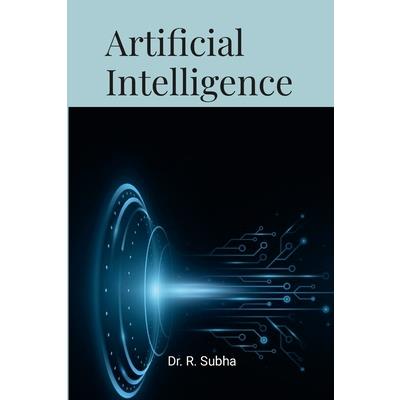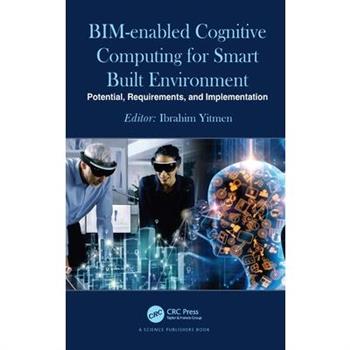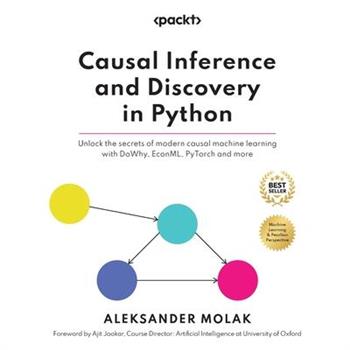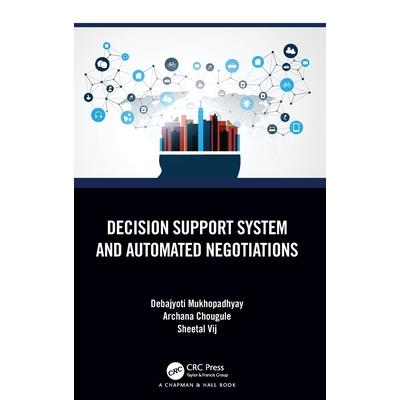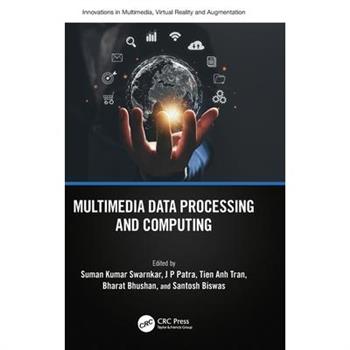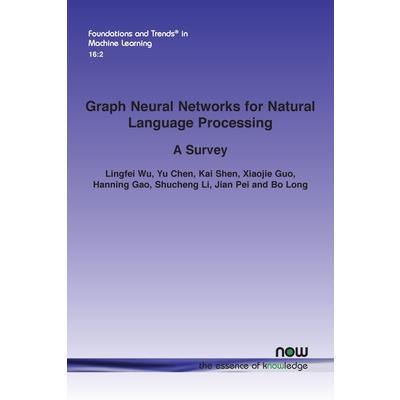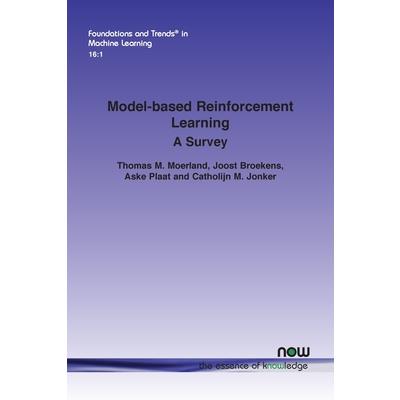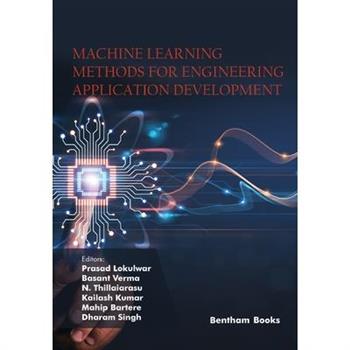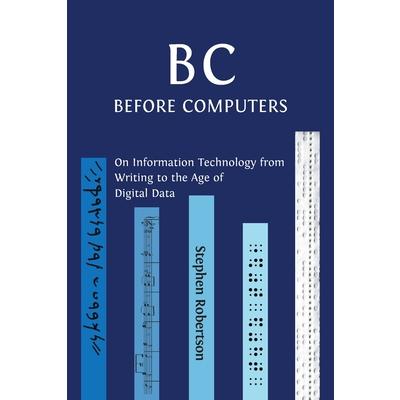Smart Cyber Physical Systems
Smart Cyber Physical Systems: Advances, Challenges and Opportunities ISBN: 9780367337889 Cyber Physical Systems (CPS) are the new generation of collaborative computational entities, with a prime focus on integration of the physical world and cyber space. Through a feedback mechanism, the system adapts itself to new conditions in real time. The scope of this book includes research experience by experts in CPS infrastructure systems, incorporating sustainability by embedding computing and communication in day-to-day applications. CPS, integrated with Blockchain, Artificial Intelligence, Internet of Things, Big Data, Cloud Computing and Communication, lay a foundation for the fourth industrial revolution, Industry 4.0. This book will be of immense use to practitioners in industries with a focus on autonomous and adaptive configuration, and on optimization, leading to increased agility, elasticity and cost effectiveness. The contributors of this book include renowned academics, industry practitioners and researchers. It offers a rigorous introduction to the theoretical foundations, techniques and practical solutions, through case studies. Building CPS with effective communication, control, intelligence and security is discussed in terms of societal and research perspectives. The objective of this book is to provide a forum for researchers and practitioners to exchange ideas and to achieve progress in CPS by highlighting applications, advances and research challenges. It is highly recommended to be used as a reference book for graduate and post-graduate level programmes in universities, with a focus on research in computer science-related courses.
Soft Computing Approach for Mathematical Modeling of Engineering Problems
This book describes different mathematical modeling and soft computing techniques used to solve practical engineering problems. It gives an overview of the current state of soft computing techniques and describes the advantages and disadvantages of soft computing compared to traditional hard computing techniques. Through examples and case studies, the editors demonstrate and describe how problems with inherent uncertainty can be addressed and eventually solved through the aid of numerical models and methods. The chapters address several applications and examples in bioengineering science, drug delivery, solving inventory issues, Industry 4.0, augmented reality and weather forecasting. Other examples include solving fuzzy-shortest-path problems by introducing a new distance and ranking functions. Because, in practice, problems arise with uncertain data and most of them cannot be solved exactly and easily, the main objective is to develop models that deliver solutions with the aid of numerical methods. This is the reason behind investigating soft numerical computing in dynamic systems. Having this in mind, the authors and editors have considered error of approximation and have discussed several common types of errors and their propagations. Moreover, they have explained the numerical methods, along with convergence and consistence properties and characteristics, as the main objectives behind this book involve considering, discussing and proving related theorems within the setting of soft computing. This book examines dynamic models, and how time is fundamental to the structure of the model and data as well as the understanding of how a process unfolds - Discusses mathematical modeling with soft computing and the implementations of uncertain mathematical models - Examines how uncertain dynamic systems models include uncertain state, uncertain state space and uncertain state's transition functions - Assists readers to become familiar with many soft numerical methods to simulate the solution function's behaviorThis book is intended for system specialists who are interested in dynamic systems that operate at different time scales. The book can be used by engineering students, researchers and professionals in control and finite element fields as well as all engineering, applied mathematics, economics and computer science interested in dynamic and uncertain systems.Ali Ahmadian is a Senior Lecturer at the Institute of IR 4.0, The National University of Malaysia.Soheil Salahshour is an associate professor at Bahcesehir University.
Brain and Behavior Computing
Brain and Behavior Computing offers insights into the functions of the human brain. This book provides an emphasis on brain and behavior computing with different modalities available such as signal processing, image processing, data sciences, statistics further it includes fundamental, mathematical model, algorithms, case studies, and future research scopes. It further illustrates brain signal sources and how the brain signal can process, manipulate, and transform in different domains allowing researchers and professionals to extract information about the physiological condition of the brain. Emphasizes real challenges in brain signal processing for a variety of applications for analysis, classification, and clustering. Discusses data sciences and its applications in brain computing visualization. Covers all the most recent tools for analysing the brain and it's working. Describes brain modeling and all possible machine learning methods and their uses. Augments the use of data mining and machine learning to brain computer interface (BCI) devices. Includes case studies and actual simulation examples. This book is aimed at researchers, professionals, and graduate students in image processing and computer vision, biomedical engineering, signal processing, and brain and behavior computing.
A Course in Machine Learning
Embark on an exhilarating journey into the realm of modern technological marvels with this comprehensive guide. Unveil the power of algorithms that can discern patterns in vast troves of data, opening doors to innovation and insight. Whether you're a tech enthusiast, a curious mind, or a seasoned programmer, "A Course in Machine Learning" invites you to demystify the enigmatic world of AI and data science. Within these pages, you'll unravel the intricacies of machine learning, guided by a seasoned expert who brings theory to life with real-world examples. Explore the algorithms that lie at the heart of self-driving cars, virtual assistants, and predictive analytics. Through hands-on exercises, sharpen your skills in creating intelligent systems that adapt and learn from experience. Dive into the realm of neural networks and deep learning, where layers of interconnected neurons mimic the human brain's astonishing capabilities. Grasp the art of feature engineering and data preprocessing to distill meaningful insights from noisy data. With step-by-step tutorials, you'll seamlessly transition from theory to practice, developing models that can decipher handwritten text, identify objects in images, and even predict future trends. Unlock the potential of unsupervised learning and reinforcement learning, letting algorithms uncover hidden patterns and optimize decision-making processes. From healthcare to finance, from entertainment to agriculture, the applications of machine learning are limitless. Gain the confidence to tackle real-world challenges and harness the power of data to transform industries and shape the future. Join the ranks of innovators who are reshaping our world through machine learning's unprecedented possibilities. Whether you're a student, a professional, or simply an inquisitive mind, "A Course in Machine Learning" equips you with the tools to unravel the complexities of AI and build a future that's driven by intelligence and imagination. Experience the thrill of discovery as you journey through these pages, guided by the wisdom of a true trailblazer in the field.
Hollywood's Italian American Filmmakers
The text provides sustainable energy solutions using smart technologies such as artificial intelligence, blockchain technology, and the Internet of Things. It further presents several case studies on applications of the Internet of Things, artificial intelligence, and blockchain technology in the field of sustainable energy. Focuses on the integration of smart technology including artificial intelligence and sustainable energy Covers recent advancements in energy management techniques used in residential and commercial energy systems Highlights the use of artificial intelligence, machine learning, and their applications in sustainable energy Discusses important topics such as green energy, grid modernization, smart security in the power grid, and fault diagnosis Presents case studies on the applications of the Internet of Things, blockchain, and artificial intelligence in sustainable energy The text showcases the latest advancements, and the importance of technologies including artificial intelligence, blockchain, and Internet of Things in achieving sustainable energy systems. It further discusses the role of machine learning, applied deep learning, and edge computing in renewable energy. The text cover key concepts such as intelligent battery management system, energy trading, green energy, grid modernization, electric vehicles, and charging station optimization. It will serve as an ideal reference text for senior undergraduate, graduate students, and academic researchers in the fields including electrical engineering, electronics and communication engineering, computer engineering, and environmental engineering.
Bad Taste in Boys
The book provides comprehensive research ideas about Edge-AI technology that can assist doctors in making better data-driven decisions. It provides insights for improving the healthcare industry by examining future trends, simplifying decision making and investigating structured and unstructured data.Edge-AI in Healthcare: Trends and Future Perspective is more than a comprehensive introduction to Artificial Intelligence as a tool in healthcare data. The book is split into five chapters covering the entire healthcare ecosystem. First section is introduction to Edge-AI in healthcare. It discusses data usage, modelling and simulation techniques as well as machine and deep learning approaches. The second section discusses the implementation of edge AI for smart healthcare. The topics discussed in this section include, AR/VR and cloud computing, big data management, algorithms, optimization, and IoMT techniques and methods. Third section covers role of Edge-AI in healthcare and the challenges and opportunities of the technologies. This section also provides case studies and discusses sustainability, security, privacy, and trust related to Edge-AI in healthcare.This book is intended to benefit researchers, academics, industry professionals, R & D organizations and students working in the field of healthcare, healthcare informatics and their applications.
Reinforcement Learning, Bit by Bit
Reinforcement learning agents have demonstrated remarkable achievements in simulated environments. Data efficiency, however, significantly impedes carrying this success over to real environments. The design of data-efficient agents that address this problem calls for a deeper understanding of information acquisition and representation. This tutorial offers a framework that can guide associated agent design decisions. This framework is inspired in part by concepts from information theory that has grappled with data efficiency for many years in the design of communication systems. In this tutorial, the authors shed light on questions of what information to seek, how to seek that information, and what information to retain. To illustrate the concepts, they design simple agents that build on them and present computational results that highlight data efficiency. This book will be of interest to students and researchers working in reinforcement learning and information theorists wishing to apply their knowledge in a practical way to reinforcement learning problems.
Machine Learning for Neuroscience
This book addresses the growing need for machine learning and data mining in neuroscience. The book offers a basic overview of the neuroscience, machine learning and the required math and programming necessary to develop reliable working models. The material is presented in a easy to follow user-friendly manner and is replete with fully working machine learning code. Machine Learning for Neuroscience: A Systematic Approach, tackles the needs of neuroscience researchers and practitioners that have very little training relevant to machine learning. The first section of the book provides an overview of necessary topics in order to delve into machine learning, including basic linear algebra and Python programming. The second section provides an overview of neuroscience and is directed to the computer science oriented readers. The section covers neuroanatomy and physiology, cellular neuroscience, neurological disorders and computational neuroscience. The third section of the book then delves into how to apply machine learning and data mining to neuroscience and provides coverage of artificial neural networks (ANN), clustering, and anomaly detection. The book contains fully working code examples with downloadable working code. It also contains lab assignments and quizzes, making it appropriate for use as a textbook. The primary audience is neuroscience researchers who need to delve into machine learning, programmers assigned neuroscience related machine learning projects and students studying methods in computational neuroscience.
Principles of Cyber-Physical Systems
A foundational text that offers a rigorous introduction to the principles of design, specification, modeling, and analysis of cyber-physical systems. A cyber-physical system consists of a collection of computing devices communicating with one another and interacting with the physical world via sensors and actuators in a feedback loop. Increasingly, such systems are everywhere, from smart buildings to medical devices to automobiles. This textbook offers a rigorous and comprehensive introduction to the principles of design, specification, modeling, and analysis of cyber-physical systems. The book draws on a diverse set of subdisciplines, including model-based design, concurrency theory, distributed algorithms, formal methods of specification and verification, control theory, real-time systems, and hybrid systems, explaining the core ideas from each that are relevant to system design and analysis. The book explains how formal models provide mathematical abstractions to manage the complexity of a system design. It covers both synchronous and asynchronous models for concurrent computation, continuous-time models for dynamical systems, and hybrid systems for integrating discrete and continuous evolution. The role of correctness requirements in the design of reliable systems is illustrated with a range of specification formalisms and the associated techniques for formal verification. The topics include safety and liveness requirements, temporal logic, model checking, deductive verification, stability analysis of linear systems, and real-time scheduling algorithms. Principles of modeling, specification, and analysis are illustrated by constructing solutions to representative design problems from distributed algorithms, network protocols, control design, and robotics. This book provides the rapidly expanding field of cyber-physical systems with a long-needed foundational text by an established authority. It is suitable for classroom use or as a reference for professionals.
Machine Learning and Artificial Intelligence
Machine Learning (ML) and Artificial Intelligence (AI) are two of the most popular and rapidly evolving fields in the technology industry. From self-driving cars and personalized recommendation systems to speech recognition and medical diagnosis, ML and AI are transforming the way we live and work.In this book, you'll learn about the fundamental concepts and practical applications of ML and AI. You'll discover how to build, train, and deploy intelligent systems using popular programming languages and frameworks such as Python, TensorFlow, and PyTorch.Here are some of the topics covered in the book: The basics of ML and AI, including supervised and unsupervised learning, deep learning, and neural networksData preprocessing, feature selection, and dimensionality reduction techniquesModel selection, evaluation, and optimizationComputer vision and image recognitionNatural language processing (NLP) and text analysisReinforcement learning and game theoryEthical considerations and potential biases in AI\And Much More!...Whether you're a beginner or an experienced programmer, this book will provide you with the knowledge and skills you need to start building intelligent systems with confidence.So, dive into the exciting world of ML and AI and unlock the potential of these cutting-edge technologies!
Artificial Intelligence
Artificial Intelligence starts by helping you understand AI, especially what AI needs to work and why it has failed in the past. You also discover the basis for some of the issues with AI today and how those issues might prove to be nearly impossible to solve in some cases. Of course, along with the issues, you also dis-cover the fixes for some problems and consider where scientists are taking AI in search of answers. For a technology to survive, it must have a group of solid applications that actually work. It also must provide a payback to investors with the foresight to invest in the technology. In the past, AI failed to achieve critical success because it lacked some of these features. AI also suffered from being ahead of its time: True AI needed to wait for the current hardware to actually succeed. Today, you can find AI used in various computer applications and to automate processes. It's also relied on heavily in the medical field and to help improve human interaction. AI is also related to data analysis, machine learning, and deep learning. AI has a truly bright future today because it has become an essential technology. This book also shows you the paths that AI is likely to follow in the future. The various trends discussed in this book are based on what people are actually trying to do now. The new technology hasn't succeeded yet, but because people are working on it, it does have a good chance of success at some point.
Bim-Enabled Cognitive Computing for Smart Built Environment
The book provides knowledge in the Building Information Model (BIM)-enabled cognitive computing methods for smart built environment involving cognitive network capabilities for smart buildings, integrating Augmented Reality/Mixed Reality in cognitive building concepts, cognitive Internet of Things (CIoT) for smart cities, Artificial Intelligence applications for cognitive cities, and cognitive smart cities using big data and machine learning. It focuses on the potential, requirements and implementation of CIoT paradigm to buildings, Artificial Intelligence techniques, reasoning, and Augmented Reality/Mixed Reality in cognitive building concepts, the concept of cognitive smart cities in its complexity, heterogeneity, and scope, and the challenge of utilizing the big data generated by smart cities from a machine learning perspective. The book comprises BIM-based and data-analytic research on cognitive IoT for smart buildings and cognitive cities using big data and machine learning as complex and dynamic systems. It presents applied theoretical contributions fostering a better understanding of such systems and the synergistic relationships between the motivating physical and informational settings. It reviews ongoing development of BIM-based and data science technologies for the processing, analysis, management, modeling, and simulation of big and context data and the associated applicability to cognitive systems that will advance different aspects of future cognitive cities. The book also analyses the required material to inform pertinent research communities of the state-of-the-art research and the latest development in the area of cognitive smart cities development, as well as a valuable reference for planners, designers, strategists, and ICT experts who are working towards the development and implementation of CIoT based on big data analytics and context-aware computing.
Causal Inference and Discovery in Python
Demystify causal inference and casual discovery by uncovering causal principles and merging them with powerful machine learning algorithms for observational and experimental dataPurchase of the print or Kindle book includes a free PDF eBookKey Features- Examine Pearlian causal concepts such as structural causal models, interventions, counterfactuals, and more- Discover modern causal inference techniques for average and heterogenous treatment effect estimation- Explore and leverage traditional and modern causal discovery methodsBook DescriptionCausal methods present unique challenges compared to traditional machine learning and statistics. Learning causality can be challenging, but it offers distinct advantages that elude a purely statistical mindset. Causal Inference and Discovery in Python helps you unlock the potential of causality.You'll start with basic motivations behind causal thinking and a comprehensive introduction to Pearlian causal concepts, such as structural causal models, interventions, counterfactuals, and more. Each concept is accompanied by a theoretical explanation and a set of practical exercises with Python code. Next, you'll dive into the world of causal effect estimation, consistently progressing towards modern machine learning methods. Step-by-step, you'll discover Python causal ecosystem and harness the power of cutting-edge algorithms. You'll further explore the mechanics of how "causes leave traces" and compare the main families of causal discovery algorithms. The final chapter gives you a broad outlook into the future of causal AI where we examine challenges and opportunities and provide you with a comprehensive list of resources to learn more.By the end of this book, you will be able to build your own models for causal inference and discovery using statistical and machine learning techniques as well as perform basic project assessment.What you will learn- Master the fundamental concepts of causal inference- Decipher the mysteries of structural causal models- Unleash the power of the 4-step causal inference process in Python- Explore advanced uplift modeling techniques- Unlock the secrets of modern causal discovery using Python- Use causal inference for social impact and community benefitWho this book is forThis book is for machine learning engineers, researchers, and data scientists looking to extend their toolkit and explore causal machine learning. It will also help people who've worked with causality using other programming languages and now want to switch to Python, those who worked with traditional causal inference and want to learn about causal machine learning, and tech-savvy entrepreneurs who want to go beyond the limitations of traditional ML. You are expected to have basic knowledge of Python and Python scientific libraries along with knowledge of basic probability and statistics.Table of Contents- Causality - Hey, We Have Machine Learning, So Why Even Bother?- Judea Pearl and the Ladder of Causation- Regression, Observations, and Interventions- Graphical Models- Forks, Chains, and Immoralities- Nodes, Edges, and Statistical (In)dependence- The Four-Step Process of Causal Inference- Causal Models - Assumptions and Challenges- Causal Inference and Machine Learning - from Matching to Meta- Learners- Causal Inference and Machine Learning - Advanced Estimators, Experiments, Evaluations, and More- Causal Inference and Machine Learning - Deep Learning, NLP, and Beyond- Can I Have a Causal Graph, Please?(N.B. Please use the Read Sample option to see further chapters)
Decision Support System and Automated Negotiations
Decision support systems are developed for integrated pest and disease management and nutrition management using open-source technologies as java, android, and low-cost hardware devices like Arduino micro controller. This text discusses the techniques to convert agricultural knowledge in the context of ontology and assist grape growers by providing this knowledge through decision support system. The key features of the book are: Presents the design & development of an ontology-based decision support system for integrated crop management. Discusses the techniques to convert agricultural knowledge in text to ontology. Focuses on an extensive study of various e-Negotiation protocols for automated negotiations Provides an architecture for predicting the opponent's behaviour and various factors which affect the process of negotiation. The text is primarily written for graduate students, professionals, and academic researchers working in the fields of computer science and engineering, agricultural science, and information technology.
Multi-Agent Technologies and Machine Learning
This book discusses multi-agent technologies (MATs) and machine learning (ML). These tools can be integrated and applied in industry, commerce, energy, medicine, psychology, and other areas. This volume consists of six chapters in three sections that discuss the integration, applications, and advanced results of MATs and ML.
Artificial Intelligence and Deep Learning for Computer Network
Artificial Intelligence and Deep Learning for Computer Network: Management and Analysis aims to systematically collect quality research spanning AI, ML, and deep learning (DL) applications to diverse sub-topics of computer networks, communications, and security, under a single cover. It also aspires to provide more insights on the applicability of the theoretical similitudes, otherwise a rarity in many such books.Features: A diverse collection of important and cutting-edge topics covered in a single volume. Several chapters on cybersecurity, an extremely active research area. Recent research results from leading researchers and some pointers to future advancements in methodology. Detailed experimental results obtained from standard data sets. This book serves as a valuable reference book for students, researchers, and practitioners who wish to study and get acquainted with the application of cutting-edge AI, ML, and DL techniques to network management and cyber security.
Integration of Cloud Computing with Emerging Technologies
This book gives a complete overview of cloud computing: its importance, its trends, innovations, and its amalgamation with other technologies.Key Features: In-depth explanation of emerging technologies utilizing cloud computing Supplemented with visuals, flow charts, and diagrams Real-time examples included Caters to beginners, as well as advanced researchers, by explaining implications, innovations, issues, and challenges of cloud computing Highlights the need for cloud computing and the true benefits derived by its application and integration in emerging technologies Simple, easy language
Multimedia Data Processing and Computing
This book focuses on different applications of multimedia with supervised and unsupervised data engineering in the modern world. It includes AI-based soft computing and machine techniques in the field of medical diagnosis, biometrics, networking, manufacturing, data science, automation in electronics industries, and many more relevant fields.Multimedia Data Processing and Computing provides a complete introduction to machine learning concepts, as well as practical guidance on how to use machine learning tools and techniques in real-world data engineering situations. It is divided into three sections. In this book on multimedia data engineering and machine learning, the reader will learn how to prepare inputs, interpret outputs, appraise discoveries, and employ algorithmic strategies that are at the heart of successful data mining. The chapters focus on the use of various machine learning algorithms, neural net- work algorithms, evolutionary techniques, fuzzy logic techniques, and deep learning techniques through projects, so that the reader can easily understand not only the concept of different algorithms but also the real-world implementation of the algorithms using IoT devices. The authors bring together concepts, ideas, paradigms, tools, methodologies, and strategies that span both supervised and unsupervised engineering, with a particular emphasis on multimedia data engineering. The authors also emphasize the need for developing a foundation of machine learning expertise in order to deal with a variety of real-world case studies in a variety of sectors such as biological communication systems, healthcare, security, finance, and economics, among others. Finally, the book also presents real-world case studies from machine learning ecosystems to demonstrate the necessary machine learning skills to become a successful practitioner.The primary users for the book include undergraduate and postgraduate students, researchers, academicians, specialists, and practitioners in computer science and engineering.
Machine Learning with Python Tutorial
Unlock the Power of Machine Learning with Python Are you ready to take your data analysis skills to the next level? Look no further than this comprehensive guide to Machine Learning with Python. In this tutorial, you will learn everything you need to know to become an expert in Machine Learning with Python, from the basics of data analysis to advanced techniques like deep learning and neural networks. With step-by-step instructions and real-world examples, this tutorial is perfect for both beginners and experienced programmers alike. Discover how to build and train predictive models, analyze large datasets, and automate complex tasks with ease. With the power of Python at your fingertips, you'll be able to tackle any data challenge and unlock new insights into your business or research. Whether you're looking to break into the field of data science or simply want to enhance your skills, this tutorial has everything you need to succeed. So why wait? Dive into the exciting world of Machine Learning with Python today and unleash your full potential! With this tutorial, you'll gain expertise in the following areas: Deep Learning and Neural NetworksPredictive Modeling and AlgorithmsBig Data and Data AnalysisSupervised and Unsupervised LearningReinforcement Learning and Decision Trees And much more! So why wait? Order your copy of this must-have tutorial today and take the first step towards becoming a data analysis expert!
Intelligent Green Communication Network for Internet of Things
The text covers the advanced and innovative concept of green communicationnetworks using the Internet of Things in different fields includingcloud technology, agriculture, the automobile sector, and robotics. It willalso help readers in learning the efficient use of sensors and devices inthe Internet of Things networks. The text covers 5G communication andits application for intelligent and green network-enabled Internet of Things.This book- Discusses intelligent and green networking-enabled Internet of Things- Covers architectures and models for intelligent and green communicationnetworks-enabled Internet of Things- Discusses designing Internet of Things devices that help in reducingthe emissions of CO2 in the environment and energy consumption- Highlights green computing approach and green communication networkdesigns and implementations for Internet of Things ecosystem- Includes studies on energy-aware systems, technologies, and greencommunicationThis book comprehensively discusses recent advances and applications inthe area of green Internet of Things communication in a single volume. Itwill serve as an ideal reference text for senior undergraduate and graduatestudents, and academic researchers in the fields of electrical engineering, electronics and communication engineering, computer engineering, andinformation technology..
Data Science for Civil Engineering
This book explains use of data science-based techniques for modeling and providing optimal solutions to complex problems in civil engineering. It discusses civil engineering problems like air, water and land pollution, climate crisis, transportation infrastructures, traffic and travel modes, mobility services, and so forth. Divided into two sections, the first one deals with the basics of data science and essential mathematics while the second section covers pertinent applications in structural and environmental engineering, construction management, and transportation. Features: Details information on essential mathematics required to implement civil engineering applications using data science techniques. Discusses broad background of data science and its fundamentals. Focusses on structural engineering, transportation systems, water resource management, geomatics, and environmental engineering. Includes python programming libraries to solve complex problems. Addresses various real-world applications of data science based civil engineering use cases. This book aims at senior undergraduate students in Civil Engineering and Applied Data Science.
Advancement of Deep Learning and Its Applications in Object Detection and Recognition
Object detection is a basic visual identification problem in computer vision that has been explored extensively over the years. Visual object detection seeks to discover objects of specific target classes in a given image with pinpoint accuracy and apply a class label to each object instance. Object recognition strategies based on deep learning have been intensively investigated in recent years as a result of the remarkable success of deep learning-based image categorization. In this book, we go through in detail detector architectures, feature learning, proposal generation, sampling strategies, and other issues that affect detection performance. The book describes every newly proposed novel solution but skips through the fundamentals so that readers can see the field's cutting edge more rapidly. Moreover, unlike prior object detection publications, this project analyses deep learning-based object identification methods systematically and exhaustively, and also gives the most recent detection solutions and a collection of noteworthy research trends. The book focuses primarily on step-by-step discussion, an extensive literature review, detailed analysis and discussion, and rigorous experimentation results. Furthermore, a practical approach is displayed and encouraged.
Multi-Sensor and Multi-Temporal Remote Sensing
This book elaborates fuzzy machine and deep learning models for single class mapping from multi-sensor, multi-temporal remote sensing images while handling mixed pixels and noise. It also covers the ways of pre-processing and spectral dimensionality reduction of temporal data. Further, it discusses the 'individual sample as mean' training approach to handle heterogeneity within a class. The appendix section of the book includes case studies such as mapping crop type, forest species, and stubble burnt paddy fields.Key features: Focuses on use of multi-sensor, multi-temporal data while handling spectral overlap between classes Discusses range of fuzzy/deep learning models capable to extract specific single class and separates noise Describes pre-processing while using spectral, textural, CBSI indices, and back scatter coefficient/Radar Vegetation Index (RVI) Discusses the role of training data to handle the heterogeneity within a class Supports multi-sensor and multi-temporal data processing through in-house SMIC software Includes case studies and practical applications for single class mapping This book is intended for graduate/postgraduate students, research scholars, and professionals working in environmental, geography, computer sciences, remote sensing, geoinformatics, forestry, agriculture, post-disaster, urban transition studies, and other related areas.
SAP GRC AC For Beginners
The book is useful and very helpful for the SAP techies working in SAP security area and wants to enhance their knowledge in SAP GRC AC .One should have a basic knowledge of SAP security and then with the help of the content mentioned here, reader can have an good overview you of SAP GRC and he/she would be able to start his career in SAP Grc Access Control area.
Conformal Prediction
Black-box machine learning models are now routinely used in high-risk settings, like medical diagnostics, which demand uncertainty quantification to avoid consequential model failures. Conformal prediction is a user-friendly paradigm for creating statistically rigorous uncertainty sets/intervals for the predictions of such models. One can use conformal prediction with any pre-trained model, such as a neural network, to produce sets that are guaranteed to contain the ground truth with a user-specified probability, such as 90%. It is easy-to-understand, easy-to-use, and in general, applies naturally to problems arising in the fields of computer vision, natural language processing, deep reinforcement learning, amongst others. In this hands-on introduction the authors provide the reader with a working understanding of conformal prediction and related distribution-free uncertainty quantification techniques. They lead the reader through practical theory and examples of conformal prediction and describe its extensions to complex machine learning tasks involving structured outputs, distribution shift, time-series, outliers, models that abstain, and more. Throughout, there are many explanatory illustrations, examples, and code samples in Python. With each code sample comes a Jupyter notebook implementing the method on a real-data example. This hands-on tutorial, full of practical and accessible examples, is essential reading for all students, practitioners and researchers working on all types of systems deploying machine learning techniques.
Modeling and Analysis of Communicating Systems
Rigorous theory and real-world applications for modeling and analysis of the behavior of complex communicating computer systems. Complex communicating computer systems--computers connected by data networks and in constant communication with their environments--do not always behave as expected. This book introduces behavioral modeling, a rigorous approach to behavioral specification and verification of concurrent and distributed systems. It is among the very few techniques capable of modeling systems interaction at a level of abstraction sufficient for the interaction to be understood and analyzed. Offering both a mathematically grounded theory and real-world applications, the book is suitable for classroom use and as a reference for system architects. The book covers the foundation of behavioral modeling using process algebra, transition systems, abstract data types, and modal logics. Exercises and examples augment the theoretical discussion. The book introduces a modeling language, mCRL2, that enables concise descriptions of even the most intricate distributed algorithms and protocols. Using behavioral axioms and such proof methods as confluence, cones, and foci, readers will learn how to prove such algorithms equal to their specifications. Specifications in mCRL2 can be simulated, visualized, or verified against their requirements. An extensive mCRL2 toolset for mechanically verifying the requirements is freely available online; this toolset has been successfully used to design and analyze industrial software that ranges from healthcare applications to particle accelerators at CERN. Appendixes offer material on equations and notation as well as exercise solutions.
Hands-On Graph Neural Networks Using Python
Design robust graph neural networks with PyTorch Geometric by combining graph theory and neural networks with the latest developments and appsPurchase of the print or Kindle book includes a free PDF eBookKey Features: Implement state-of-the-art graph neural network architectures in PythonCreate your own graph datasets from tabular dataBuild powerful traffic forecasting, recommender systems, and anomaly detection applicationsBook Description: Graph neural networks are a highly effective tool for analyzing data that can be represented as a graph, such as social networks, chemical compounds, or transportation networks. The past few years have seen an explosion in the use of graph neural networks, with their application ranging from natural language processing and computer vision to recommendation systems and drug discovery.Hands-On Graph Neural Networks Using Python begins with the fundamentals of graph theory and shows you how to create graph datasets from tabular data. As you advance, you'll explore major graph neural network architectures and learn essential concepts such as graph convolution, self-attention, link prediction, and heterogeneous graphs. Finally, the book proposes applications to solve real-life problems, enabling you to build a professional portfolio. The code is readily available online and can be easily adapted to other datasets and apps.By the end of this book, you'll have learned to create graph datasets, implement graph neural networks using Python and PyTorch Geometric, and apply them to solve real-world problems, along with building and training graph neural network models for node and graph classification, link prediction, and much more.What You Will Learn: Understand the fundamental concepts of graph neural networksImplement graph neural networks using Python and PyTorch GeometricClassify nodes, graphs, and edges using millions of samplesPredict and generate realistic graph topologiesCombine heterogeneous sources to improve performanceForecast future events using topological informationApply graph neural networks to solve real-world problemsWho this book is for: This book is for machine learning practitioners and data scientists interested in learning about graph neural networks and their applications, as well as students looking for a comprehensive reference on this rapidly growing field. Whether you're new to graph neural networks or looking to take your knowledge to the next level, this book has something for you. Basic knowledge of machine learning and Python programming will help you get the most out of this book.
Sensing and Artificial Intelligence Solutions for Food Manufacturing
This book gives readers a practical introduction into machine learning and sensing techniques, their design and ultimately specific applications that could improve food production. It shows how these sensing and computing systems are suitable for process implementation in food factories.This book starts by giving the reader an overview of the historic structures of food manufacturing standards and how they defined today's manufacturing. It is followed by a topical introduction for professionals in the food industries in topics such as AI, machine learning, and neural networks. It also includes an explanation of the different sensor systems and their basic principles. It shows how these sensing and computing systems are suitable for process implementation in food factories and what types of sensing systems have already been proven to deliver benefit to the food manufacturing industries. The authors also discuss issues around food safety, labelling, and traceability and how sensing and AI can help to resolve issues. They also use case studies and specific examples that can show the benefit of such technologies compared to current approaches. This book is a practical introduction and handbook for students, food engineers, technologists and process engineers on the benefits and challenges around modern manufacturing systems following Industry 4.0 approaches.
Deep Learning for Crack-Like Object Detection
Computer vision-based crack-like object detection has many useful applications, such as inspecting/monitoring pavement surface, underground pipeline, bridge cracks, railway tracks etc. However, in most contexts, cracks appear as thin, irregular long-narrow objects, and often are buried in complex, textured background with high diversity which make the crack detection very challenging. During the past a few years, deep learning technique has achieved great success and has been utilized for solving a variety of object detection problems.This book discusses crack-like object detection problem comprehensively. It starts by discussing traditional image processing approaches for solving this problem, and then introduces deep learning-based methods. It provides a detailed review of object detection problems and focuses on the most challenging problem, crack-like object detection, to dig deep into the deep learning method. It includes examples of real-world problems, which are easy to understand and could be a good tutorial for introducing computer vision and machine learning.
Advances in Soft Computing Applications
This book discusses the most recent soft computing and fuzzy logic-based applications and innovations in industrial advancements, supply chain and logistics, system optimization, decision-making, artificial intelligence, smart systems, and other rapidly evolving technologies.
Introduction to Riemannian Geometry and Geometric Statistics
As data is a predominant resource in applications, Riemannian geometry is a natural framework to model and unify complex nonlinear sources of data. However, the development of computational tools from the basic theory of Riemannian geometry is laborious. In this monograph the authors present a self-contained exposition of the basic concepts of Riemannian geometry from a computational viewpoint, providing illustrations and examples at each step. They proceed to demonstrate how these concepts are implemented in the open-source project Geomstats, explaining the choices that were made and the conventions chosen. The reader thus learns in one self-contained volume the theory of Riemann geometry and geometric statistics and their implementation to perform statistics and machine learning on manifolds. Containing many practical Python examples, this monograph is a valuable resource both for mathematicians and applied scientists to learn the theory of Riemann geometry and its use in practice implemented with the Geomstats package where most of the difficulties are hidden under high-level functions.
Computational Techniques for Text Summarization based on Cognitive Intelligence
The book is concerned with contemporary methodologies used for automatic text summarization. It proposes interesting approaches to solve well-known problems on text summarization using computational intelligence (CI) techniques including cognitive approaches. A better understanding of the cognitive basis of the summarization task is still an open research issue; an extent of its use in text summarization is highlighted for further exploration. With the ever-growing text, people in research have little time to spare for extensive reading, where summarized information helps for a better understanding of the context at a shorter time. This book helps students and researchers to automatically summarize the text documents in an efficient and effective way. The computational approaches and the research techniques presented guides to achieve text summarization at ease. The summarized text generated supports readers to learn the context or the domain at a quicker pace. The book is presented with reasonable amount of illustrations and examples convenient for the readers to understand and implement for their use. It is not to make readers understand what text summarization is, but for people to perform text summarization using various approaches. This also describes measures that can help to evaluate, determine, and explore the best possibilities for text summarization to analyse and use for any specific purpose. The illustration is based on social media and healthcare domain, which shows the possibilities to work with any domain for summarization. The new approach for text summarization based on cognitive intelligence is presented for further exploration in the field.
Soft Computing
This book explores soft computing techniques in a systematic manner starting from their initial stage to recent developments in this area. The book presents a survey of the existing knowledge and the current state-of-the-art development through cutting-edge original new contributions from the researchers. Soft Computing: Recent Advances and Applications in Engineering and Mathematical Sciences presents a survey of the existing knowledge and the current state-of-the-art development through cutting-edge original new contributions from the researchers. As suggested by the title, this book particularly focuses on the recent advances and applications of soft computing techniques in engineering and mathematical sciences. Chapter 1 describes the contribution of soft computing techniques towards a new paradigm shift. The subsequent chapters present a systematic application of fuzzy logic in mathematical sciences and decision-making. New research directions are also provided at the end of each chapter. The application of soft computing in health sciences and in the modeling of epidemics including the effects of vaccination are also examined. Sustainability of green product development, optimum design of 3D steel frame, digitalization investment analysis in the maritime industry, forecasting return rates of individual pension funds are among some of the topics where engineering and industrial applications of soft computing have been studied in the book. The readers of this book will require minimum prerequisites of undergraduate studies in computation and mathematics. This book is meant for graduate students, faculty, and researchers who are applying soft computing in engineering and mathematics. New research directions are also provided at the end of each chapter.
Smart Urban Computing Applications
This book reports research advances in the area of deep learning, IoT and urban computing, and describes new insights based on deep learning and IoT for urban computing.
Graph Neural Networks for Natural Language Processing
Deep learning has become the dominant approach in addressing various tasks in Natural Language Processing (NLP). Although text inputs are typically represented as a sequence of tokens, there is a rich variety of NLP problems that can be best expressed with a graph structure. As a result, there is a surge of interest in developing new deep learning techniques on graphs for a large number of NLP tasks. In this monograph, the authors present a comprehensive overview on Graph Neural Networks (GNNs) for Natural Language Processing. They propose a new taxonomy of GNNs for NLP, which systematically organizes existing research of GNNs for NLP along three axes: graph construction, graph representation learning, and graph based encoder-decoder models. They further introduce a large number of NLP applications that exploits the power of GNNs and summarize the corresponding benchmark datasets, evaluation metrics, and open-source codes. Finally, they discuss various outstanding challenges for making the full use of GNNs for NLP as well as future research directions. This is the first comprehensive overview of Graph Neural Networks for Natural Language Processing. It provides students and researchers with a concise and accessible resource to quickly get up to speed with an important area of machine learning research.
A Developer’s Guide to Cloud Apps Using Microsoft Azure
Build and deploy modern and secure applications on Microsoft Azure by implementing best practices, patterns, and new technologies with this easy-to-follow guidePurchase of the print or Kindle book includes a free PDF eBookKey Features: Learn various methods to migrate legacy applications to cloud using different Azure servicesImplement continuous integration and deployment as a best practice for DevOps and agile developmentGet started with building cloud-based applications using containers and orchestrators in different scenariosBook Description: Companies face several challenges during cloud adoption, with developers and architects needing to migrate legacy applications and build cloud-oriented applications using Azure-based technologies in different environments. A Developer's Guide to Cloud Apps Using Microsoft Azure helps you learn how to migrate old apps to Azure using the Cloud Adoption Framework and presents use cases, as well as build market-ready secure and reliable applications.The book begins by introducing you to the benefits of moving legacy apps to the cloud and modernizing existing ones using a set of new technologies and approaches. You'll then learn how to use technologies and patterns to build cloud-oriented applications. This app development book takes you on a journey through three major services in Azure, namely Azure Container Registry, Azure Container Instances, and Azure Kubernetes Service, which will help you build and deploy an application based on microservices. Finally, you'll be able to implement continuous integration and deployment in Azure to fully automate the software delivery process, including the build and release processes.By the end of this book, you'll be able to perform application migration assessment and planning, select the right Azure services, and create and implement a new cloud-oriented application using Azure containers and orchestrators.What You Will Learn: Get to grips with new patterns and technologies used for cloud-native applicationsMigrate old applications and databases to Azure with easeWork with containers and orchestrators to automate app deploymentSelect the right Azure service for deployment as per the use casesSet up CI/CD pipelines to deploy apps and services on Azure DevOpsLeverage Azure App Service to deploy your first applicationBuild a containerized app using Docker and Azure Container RegistryWho this book is for: This book is for cloud developers, software architects, system administrators, developers, and computer science students looking to understand the new role of the software architect or developer in the cloud world. Professionals looking to enhance their cloud and cloud-native programming concepts will also find this book useful. A sound background in C#, ASP.NET Core, and Visual Studio (any recent version) and basic knowledge of cloud computing will be helpful.
Model-based Reinforcement Learning
Sequential decision making, commonly formalized as Markov Decision Process (MDP) optimization, is an important challenge in artificial intelligence. Two key approaches to this problem are reinforcement learning (RL) and planning. This monograph surveys an integration of both fields, better known as model-based reinforcement learning. Model-based RL has two main steps: dynamics model learning and planning-learning integration. In this comprehensive survey of the topic, the authors first cover dynamics model learning, including challenges such as dealing with stochasticity, uncertainty, partial observability, and temporal abstraction. They then present a systematic categorization of planning-learning integration, including aspects such as: where to start planning, what budgets to allocate to planning and real data collection, how to plan, and how to integrate planning in the learning and acting loop. In conclusion the authors discuss implicit model-based RL as an end-to-end alternative for model learning and planning, and cover the potential benefits of model-based RL. Along the way, the authors draw connections to several related RL fields, including hierarchical RL and transfer learning. This monograph contains a broad conceptual overview of the combination of planning and learning for Markov Decision Process optimization. It provides a clear and complete introduction to the topic for students and researchers alike.
A graph theoretic approach to Information hiding
Technique of information hiding wonderfully conceals a secret message inside a digital cover. More is the redundancy in a cover file much larger message can be concealed in it in such a way that it escapes any suspicion. The practice of information hiding has its own distinguished history; modern technology is only facilitating it as to how beautifully it can be used for maintaining privacy of information. There are many substitution based embedding algorithms that flips some randomly selected bits of cover with the assumption that it will be undetectable because of the noise commonly present in digital image of natural scenes. Substitution based embedding algorithms are prone to successful attacks. The study of Graph Theoretic Approach (GTA) is carried out to develop an approach to hide information in digital cover like an image, a graph or a map in sustainable way. By sustainable steganography we mean preserving statistics of cover in stego by avoiding possible distortion in the cover due to embedding of the message in it. The study is carried out to achieve the objectives to develop algorithm to hide information in a digital cover and digitally watermark digital vector map.
Machine Learning Methods for Engineering Application Development
This book is a quick review of machine learning methods for engineeringapplications. It provides an introduction to the principles of machine learningand common algorithms in the first section. Proceeding chapters summarize andanalyze the existing scholarly work and discuss some general issues in this field.Next, it offers some guidelines on applying machine learning methods to softwareengineering tasks. Finally, it gives an outlook into some of the futuredevelopments and possibly new research areas of machine learning and artificialintelligence in general.Techniques highlighted in the book include: Bayesian models, supportvector machines, decision tree induction, regression analysis, and recurrent andconvolutional neural network. Finally, it also intends to be a reference book. Key Features: Describes real-world problems that can be solved using machine learningExplains methods for directly applying machine learning techniques to concrete real-world problemsExplains concepts used in Industry 4.0 platforms, including the use and integration of AI, ML, Big Data, NLP, and the Internet of Things (IoT). It does not require prior knowledge of the machine learning This book is meantto be an introduction to artificial intelligence (AI), machine earning, and itsapplications in Industry 4.0. It explains the basic mathematical principlesbut is intended to be understandable for readers who do not have a backgroundin advanced mathematics.
Smart Trajectories
This book highlights the developments, discoveries, and practical and advanced experiences related to responsive distributed computing and how it can support the deployment of trajectory-based applications in smart systems.
ACSL Contests 2020-2021
This book contains the 2020-2021 contests organized by the American Computer Science League. ACSL is divided into multiple divisions to appeal to different abilities of students. Each competition in the Senior, Intermediate, and Junior divisions consist of two parts: Theory Problems that cover fundamental concepts in computer science and a Coding Problem that students solve by writing a computer program in a language of their choice. The Elementary and Classroom divisions consist of theory problems only. The 2020-2021 school year was ACSL's 43rd year of continuous operation! About 5,000 students in the United States, Canada, Europe, and Asia participated. We welcome the reader to learn more about the American Computer Science League on its website, www.acsl.org.
Diagnosis of Neurological Disorders Based on Deep Learning Techniques
This book is based on deep learning approaches used for the diagnosis of neurological disorders, including basics of deep learning algorithms using diagrams, data tables, and practical examples, for diagnosis of neurodegenerative and neurodevelopmental disorders. It includes application of feed-forward neural networks, deep generative models, convolutional neural networks, graph convolutional networks, and recurrent neural networks in the field of diagnosis of neurological disorders. Along with this, data preprocessing including scaling, correction, trimming, and normalization is also included. Offers a detailed description of the deep learning approaches used for the diagnosis of neurological disorders. Demonstrates concepts of deep learning algorithms using diagrams, data tables, and examples for the diagnosis of neurodegenerative, neurodevelopmental, and psychiatric disorders. Helps build, train, and deploy different types of deep architectures for diagnosis. Explores data preprocessing techniques involved in diagnosis. Includes real-time case studies and examples. This book is aimed at graduate students and researchers in biomedical imaging and machine learning.
Introduction to Spacecraft Control Centers
This book covers the topic of satellite control centers. We'll take a look at the historical development of satellite control centers, from the earliest efforts of the iconic Apollo Mission Control at Houston. The primary focus will be NASA efforts, but similar facilities for other nation's spaceflight efforts will also be presented. This book is intended as an introduction to the subject. We'll look at the evolution of satellite control centers to understand how we got to where we are, and we'll look at evolving technology to see where we can go.As technology advances, we have a better basis for control centers, as well as cheaper yet more capable hardware, and better and more available software. With the proliferation of inexpensive Cubesat projects, colleges and universities, high school, and even individuals are getting their Cubesats launched. They all need control centers. For lower cost missions, these can be shared facilities. Communicating with and operating a spacecraft in orbit or on another planet is challenging, but is an extension of operating any remote system. We have communications and bandwidth issues, speed-of-light communication limitations, and complexity. Remote debugging is a always a challenge. The satellite control center is part of what is termed the Ground Segment, which also includes the communication uplink and downlink. The control center generates uplink data (commands) to the spacecraft, and receives, processes, and archives downlink (telemetry) data. Now, we can implement control-center-as-a service, and there are global colloborative networks for command and control.
AI and Digital Technology for Oil and Gas Fields
The book essentially covers the growing role of AI in the oil and gas industry, including digital technologies used in the exploration phase, customer sales service, and cloud-based digital storage of reservoir simulation data for modeling. It starts with the description of AI systems and their roles within the oil and gas industry, including the agent-based system, the impact of industrial IoT on business models, and the ethics of robotics in AI implementation. It discusses incorporating AI into operations, leading to the reduction of operating costs by localizing control functions, remote monitoring, and supervision.Features of this book are given as follows: It is an exclusive title on the application of AI and digital technology in the oil and gas industry It explains cloud data management in reservoir simulation It discusses intelligent oil and gas well completion in detail It covers marketing aspects of oil and gas business during the exploration phase It reviews development of digital systems for business purposes This book is aimed at professionals in petroleum and chemical engineering, technology, and engineering management.
Thermoeconomic Analysis of Combined Cycle Thermal Power Plant
INTRODUCTION1.1 BackgroundAs the human population explodes, the available natural resources are becoming scarce.Urgent, Practical, and efficient ways need to be devised to conserve and augment theiravailability. Steps such as reducing their use, finding substitutes, and employing moreefficient and eco-friendly techniques are the methods that need proper attention.The use of energy by humans in various activities has dominated the scene for severalcenturies. However, in the last 150 years, the per capita consumption of energy has assumedgreat importance. Energy, today is the driving force behind almost all developments. Thewhole world is striving for generating more and more power using various resourcesavailable. Thermal plants based on coal, gas, and liquid fossil fuels are still in vogue.
Iot in Healthcare Systems
Implementing new information technologies into the healthcare sector can provide alternatives to managing patients' health records, systems, and improving the quality of care received. This book provides an overview of Internet of Things (IoT) technologies related to the healthcare field and covers the main advantages and disadvantages along with industry case studies. This edited volume covers required standardization and interoperability initiatives, various Artificial Intelligence and Machine Learning algorithms, and discusses how health technology can meet the challenge of improving quality of life regardless of social and financial status, gender, age, and location. The book presents real-time applications and case studies in the fields of engineering, computer science, IoT, and healthcare and provides many examples of successful IoT projects.The target audience for this edited volume includes researchers, practitioners, students, as well as key stakeholders involved in and working on healthcare engineering solutions.
B C, Before Computers
The idea that the digital age has revolutionized our day-to-day experience of the world is nothing new, and has been amply recognized by cultural historians. In contrast, Stephen Robertson's BC: Before Computers is a work which questions the idea that the mid-twentieth century saw a single moment of rupture. It is about all the things that we had to learn, invent, and understand - all the ways we had to evolve our thinking - before we could enter the information technology revolution of the second half of the twentieth century. Its focus ranges from the beginnings of data processing, right back to such originary forms of human technology as the development of writing systems, gathering a whole history of revolutionary moments in the development of information technologies into a single, although not linear narrative. Treading the line between philosophy and technical history, Robertson draws on his extensive technical knowledge to produce a text which is both thought-provoking and accessible to a wide range of readers. The book is wide in scope, exploring the development of technologies in such diverse areas as cryptography, visual art and music, and the postal system. Through all this, it does not simply aim to tell the story of computer developments but to show that those developments rely on a long history of humans creating technologies for increasingly sophisticated methods of manipulating information.Through a clear structure and engaging style, it brings together a wealth of informative and conceptual explorations into the history of human technologies, and avoids assumptions about any prior knowledge on the part of the reader. As such, it has the potential to be of interest to the expert and the general reader alike.





